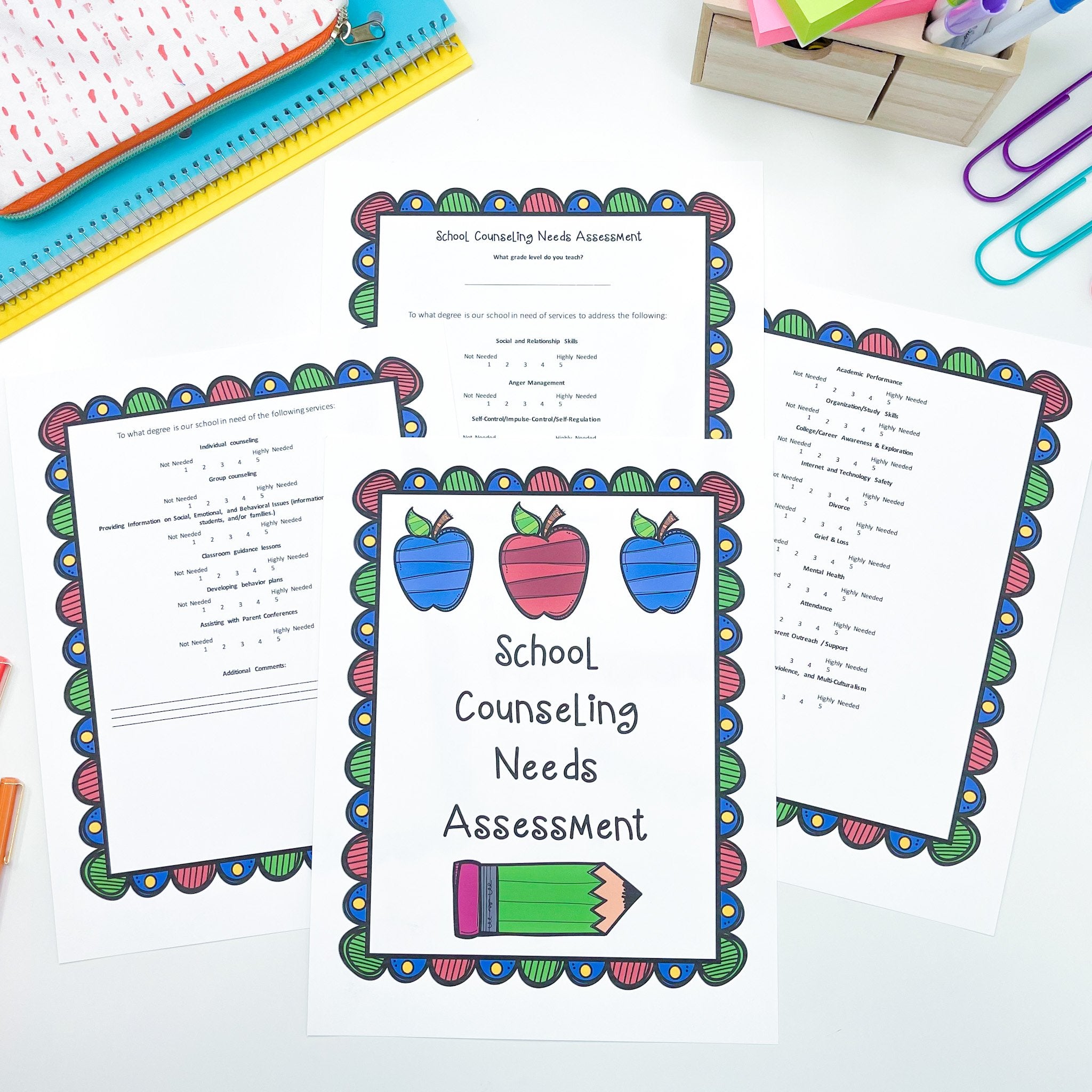School Counseling Data Collection Roundup: Choosing the right tools and using them the right way
Data collection has always been my passion, not because I've grown up loving numbers but simply because over the years, I've come to see how much value statistical data holds in the success of one's school counseling program. It might take a bit to get a hang of data collection but since a new academic year just started, I cannot stress enough on how great a time it is to get started on gathering data to drive your program.
Here's your cheat sheet that lists my top 6 data collection tools and helps you understand which tool to use when, how, and with whom.
1. Needs Assessment Forms
What are they? Needs assessments are exactly what they sound like, a great way for assessing the needs of your student population.
Who are they for? Teachers
When to use them? At the beginning of the year/new semester
How to use this tool? You would typically send teachers these forms for them to recommend the types of services that are needed for their students and which topics they would like to see covered. You can then use this feedback to help plan your classroom lessons and your small groups. You can create your own and you can even go digital using Google Forms! Check out mine here.
2. Referral Forms
What are they? A form to collect background information about a student who is being referred for check-ins/counseling (tier 2 or 3).
Who are they for? Teachers and/or parents
When to use them? Before sending home a permission slip or scheduling a check-in and before starting .
How to use this tool? Send out referral forms to parents or teachers/admin when there is a formal/informal request from the parents/teacher respectively for you to check-in with a particular child.
3. Self Assessment Forms
I've been using self-assessments for years because they are so simple to create and yield big time results when it comes to measuring students progress as a result of your services.
What are they? Self-assessments are a great way for students to reflect on their own progress.
Who are they for? You can use them with any students who you are seeing in groups or individually.
When to use them? Send these out during the first and last session of groups and individual sessions to track student progress.
How to use this tool? Have students answer the self-assessment questions then record their data. If you're working with younger students you can survey them by asking them the questions directly and writing down their answers. For virtual learning, send out a digital Google Forms version.
Check out my self-assessment templates here.
4. Behavior Surveys
Getting parent and teacher perspective is essential to creating a comprehensive data report and that's why behavior surveys should be a tool you use regularly in your program.
What are they? Behavior surveys are such a great way to understand how your students are applying what you're teaching them in counseling. Use the data to track student growth and determine if further services are needed.
Who are they for? Parents and teachers
When to use them? Before and after groups and individual sessions to track student progress. (Do not send after each session but before and after 6-8 weeks of sessions.)
How do I use this tool? Send these surveys to parents and teachers to assess how the student's behavior is changing as a reflection of the skills they are working on in your small group/individual counseling sessions. It is important to survey both parents and teachers to see how the student's behavior differs in the home and school setting.
Check out my behavior survey templates here. Here is a video tutorial of how to create your own.
5. End of the Year Report
An End of the Year Report is a great way to reflect on your program's progress and feel proud of all of your hard work!
What is it? A report that shows how many students you served, how many guidance lessons you taught, groups you've run, kids you've seen individually, and even how much time you spent with students! This is a great place to showcase the graphs and data you've been collecting in the previously mentioned tools. This way you can modify your program to best fit all student needs in the upcoming school year.
Who is it for? Principal/admin, your team
When to use it? At the end of the year
How to use it? Gather all of the data you've collected throughout the school year (self- assessments, behavior progress monitoring, parent/teacher feedback, etc) and organize it in charts and graphs to show a summary of services provided.
You can create your own or check out my editable EOTY Report template here.
6. School Counseling
If you prefer a report that's less wordy and more visually appealing, you should consider creating a data wall.
What is it? A big wall display featuring student growth and program progress.
Who is it for? Parents, teachers, and admin
When to use it? At the end of each quarter, semester, and at the end of the year.
How to use it? Create charts and graphs showing services provided and student progress data then cut and paste them on to a bulletin board to showcase your program's progress.
Check out my Data Wall Bulletin Board Kit here.
Are you feeling more confident to tackle data collection now? Looking to get started with some readymade templates that you can edit? Check out my Data Tools Bundle. Which is your favorite data collection tool? Let me know in the comments!
SHARE:















